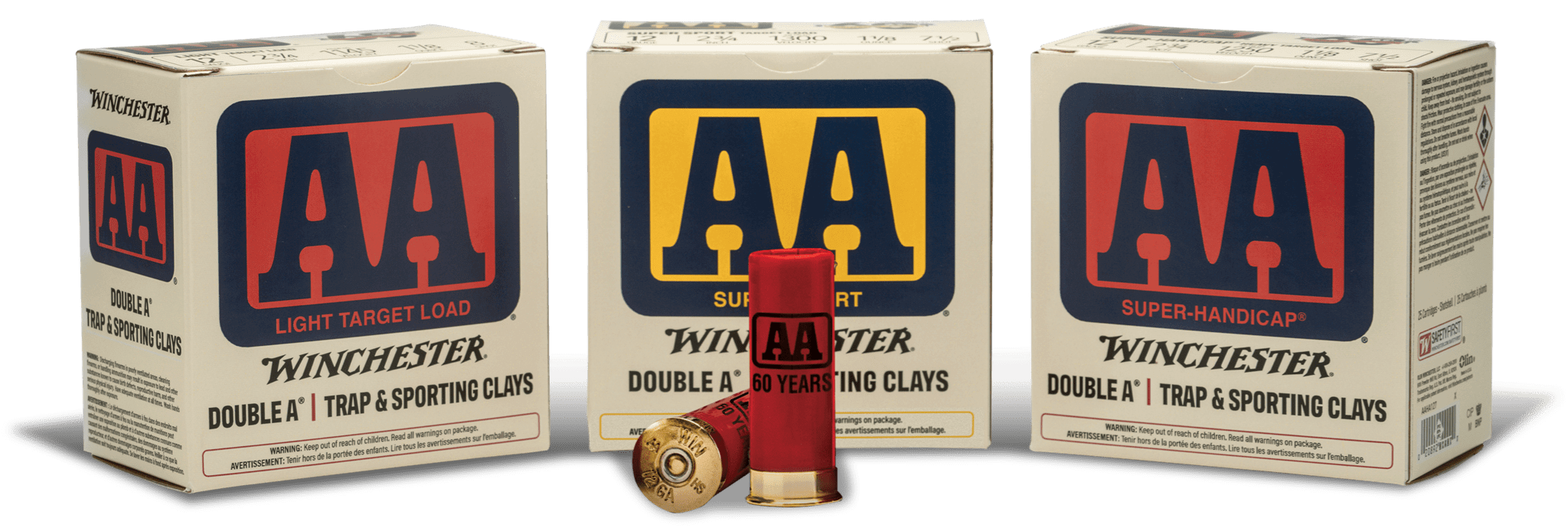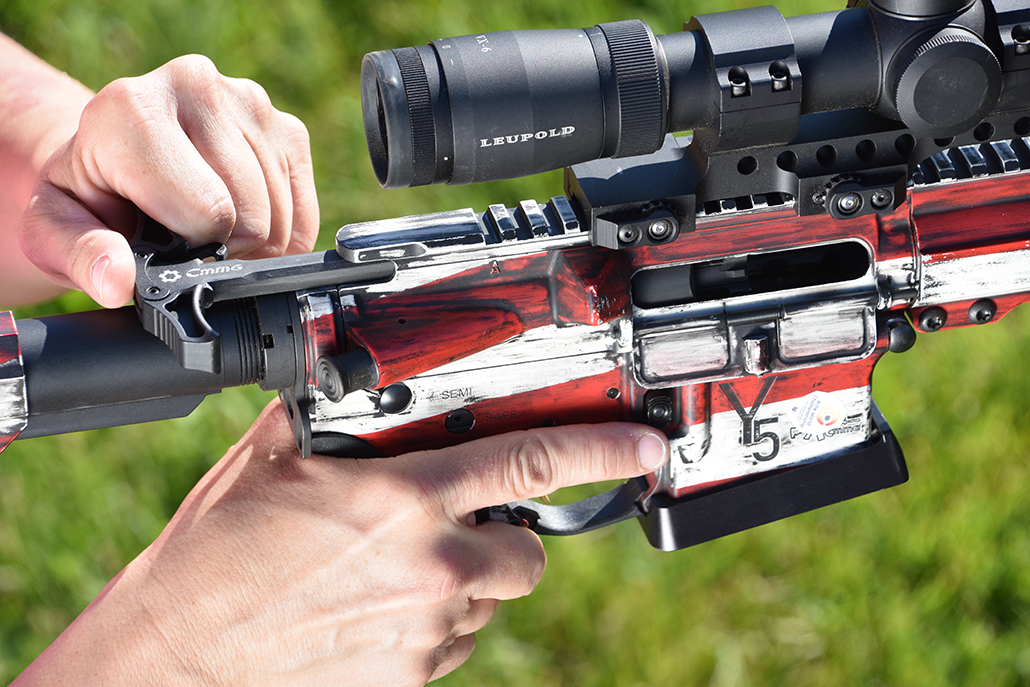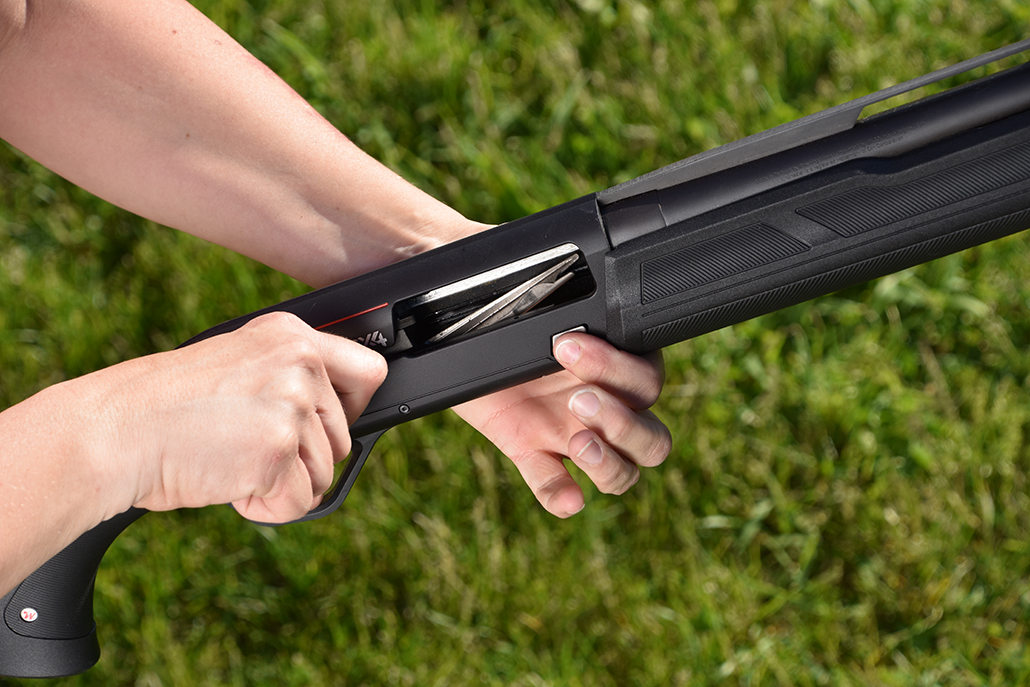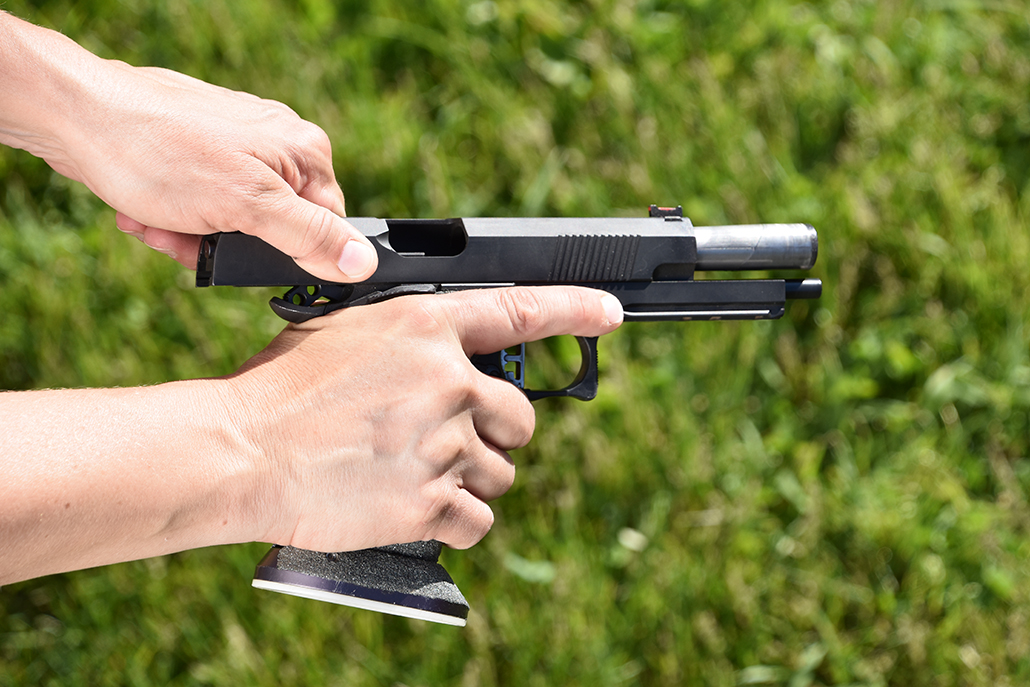Getting Used to Firearm Platforms for the First-Time Gun Owner
First-time gun owners have a bright spot to focus on - they are essentially a “clean slate” when it comes to developing safe firearm-handling habits and proper technique.
I’m going to share a few tips for each platform: rifle, pistol and shotgun. The goal is for you to use this information to safely start enjoying your range days!Preventing cookies from being stored on your device may interfere with your ability to view video content.
You can adjust your cookie setting by clicking the button below.
Follow the Four Rules of Firearms Safety
The very first thing a new firearm owner should focus on are the Four Rules of Firearms Safety. The reason these rules are so important is that building good habits on the range begins with respecting guns — just as we do other powerful tools.
Manipulables
This heading is a nod to the Montessori school philosophy that humans learn with their hands and by doing things. Hands-on education incorporates learning with things like manipulables. Firearms are great learning manipulables! Montessori also incorporates the idea of freedom in learning, but within limits. This idea fits firearms education and the need for freedom to adjust what you do to your skill level but always staying within limits on safety.
It’s important to recognize those limits. A brand-new shooter is not going to be safely capable of the things that someone who has years of experience can easily execute. So work for precise and deliberate manipulation of your guns, and know that speed comes with time and practice.
Manipulating a Rifle
The first platform we will discuss manipulating is a rifle. We’re going to talk about the AR platform, sometimes referred to as the “modern sporting rifle,” because this platform is so common.
- Is It Empty?
Every time you pick up a firearm, you should check to make sure it is empty. To check if a semi-auto rifle is empty, you need to remove the source of ammo or the magazine, pull the bolt back, and inspect the chamber to see if the gun is empty. You can lock the bolt back with the bolt release to keep it open.
- Is the Safety On?
To engage the safety on an AR platform rifle, you simply turn the safety selector to “safe.”
For a brand-new shooter, one thing you might not know about an AR platform rifle is that with the hammer down, you cannot engage the safety. So if you have an empty AR that you seem unable to put on safe, pull the bolt fully back to the rear (this cocks the hammer), and you will be able to put your gun on safe.
- How To Load and Unload
Loading
To load the rifle, insert the magazine until you hear and feel it click as the magazine catch locks into the slot in the magazine. You can check that it’s inserted all the way by practicing the habit of pushing the mag till you feel a click and then pulling down to check if it stays. You then pull the bolt back and let it go to allow the bolt to pick up a round from the magazine and chamber it. Alternatively, with the bolt locked back, you can just hit the bolt release and the bolt will go forward and chamber a round.
Unloading
If your rifle’s design allows, you will ideally put your rifle on safe before attempting to unload it. When you unload the rifle, you drop the magazine by hitting the magazine release and pull the bolt back to clear the chamber. You can either hold the bolt back and inspect the chamber or lock the bolt back and inspect the chamber. Then you apply the safety if not already done.
Manipulating a Shotgun
A shotgun can be a break-action like an over-under, or single shot, or it can be a pump action, or semi-auto, like my SX4 pictured.
- Is It Empty?
To confirm that a semi-auto shotgun is unloaded, you pull the bolt handle back to inspect the chamber. On a pump shotgun, there is often a button that must be depressed to allow the action to open.
Semi-auto and pump-action shotguns have magazine tubes. You need to inspect the opening of the mag tube to determine if it is empty. You are looking for the follower inside the tube, where the tube meets the receiver. If you see the follower, then the tube is empty. For those new to shotgun ownership, it is possible to have an empty chamber with rounds still inside the tube. The follower is a simple item to look for to ensure the magazine tube is empty.
If you ever get to shoot, say, grandpa’s old shotgun but you have never worked with it and cannot open the action, do not force the gun! Treat it as if it was loaded, and read the make and model off the barrel or receiver and search online for some tutorials on loading and unloading your particular gun. This is also a good reason to become familiar with the firearms your family has as heirloom guns can have their finicky behaviors. You don’t want to assume something isn’t working because you never spent time learning about it with your family.
- Is the Safety On?
Shotgun safeties are usually in front of or behind the trigger. Some shotguns have the safety on the top of the receiver, just in front of where the stock ends. On some break-action-type shotguns, the act of opening the gun to unload and reload will engage the safety automatically, and you will need to disengage the safety every time you shoot.
- How To Load and Unload
Load a shotgun by inserting a round into the chamber and closing the bolt, then load rounds into the magazine tube. You can also close the action on an empty chamber, load the magazine tube, and then rack a round into the chamber. You should always check that your gun is on safe before/after loading.
Pay attention as you load the rounds into the tube. Each round gets pushed past the shell catch. The shell catch is a mechanism inside the receiver that stops the rounds from emptying out of the tube. If you do not push the round past the shell catch, the spring pressure from the spring inside your magazine tube can send that round backward into the receiver where it will sit on the lifter. If this happens, just hand-cycle the gun to get the round out of the way so that you can continue loading.
Unloading
That act of hand-cycling a round into the chamber and out is often referred to as “racking” the rounds out of the gun. You can hand-cycle shells through your gun to unload it. If you do this, you should always do this with your safety engaged, and it’s best done outside with the gun pointed in a safe direction!
- Shotguns for Dummies
You can purchase dummy rounds to learn the ins and outs of how your shotgun loads and unloads. Another item dummy rounds are great for is learning how to depress the shell catch and remove rounds from your magazine tube without having to hand-cycle or rack the round into the chamber and then out. I often unload my dummy rounds this way when I practice because I don’t like chasing dummy rounds or having to rack them out over my couch to catch them.
For my Winchester SX4, if I push the lifter up, I can place my finger inside the receiver and depress the foot of the shell catch, allowing the rim of the shell to slip past and out of the magazine tube. This is a quiet way to unload your shotgun as well if you have to do so while hunting. After you empty your magazine tube, you need to pull the bolt handle back and remove any rounds from inside the chamber.
The final step when emptying the shotgun is to inspect the gun’s chamber to ensure it is empty and then to lock the bolt back.
One quirk of shotguns is that there are several variations and different locations for safeties and bolt releases. They can have a button by the trigger guard, a safety selector on top of the receiver, and variations that are not complicated, just not universal. So if your new firearm came with a manual from the manufacturer, read it!
Manipulating a Pistol
The steps for manipulating a pistol come with two special pieces of advice:
- Pay attention to where the muzzle is pointed. It is very easy to turn a handgun while you are manipulating it. You never want to let the handgun point at any part of your body or someone next to you on the range.
- Keep your finger off the trigger. It’s very easy as a new firearm owner to be unaware of your trigger finger. Practice always manipulating your handgun with your finger outside of the trigger guard. Preferably, lay it alongside the frame. This is a good habit and is part of the rule, “Keep your finger off the trigger until you are ready to shoot.”
- Is the Safety On?
Unlike shotguns and rifles, some semi-auto pistols cannot be manipulated with the safety engaged. Others have internal safeties you don’t see. These are reasons to read more about your particular handgun before you hit the range.
- Is It Empty?
To check if a semi-auto pistol is empty, you will need to make sure there is no magazine inserted and then rack the slide back and lock it open. You do this with two hands. I like to think of it not as pulling the slide back but using both hands in sort of a push/pull motion with each hand. This can make it easier to bring the slide back on a gun that is difficult to manipulate.
- How Do I Load and Unload It?
Loading
To load a semi-auto pistol, you insert a magazine, pull the slide back and let it go. “Slingshot” is a term many people use to describe this action. The force of the spring in the pistol will cause the slide to return forward and pick a round up off the magazine and chamber it in the process.
You can also lock your slide back, insert a magazine and hit the slide release. This is often easier for new shooters or people who do not have the hand strength to rack the slide.
Unloading
Unloading your handgun starts with removing the magazine, racking the slide back to remove the round from inside the chamber. And if you have a safety, engage the safety.
Loaded With Information!
Now that you have some idea of how to manipulate firearms, it’s time to gather your ammo. When I shoot a new firearm, I like shooting factory ammo through it. This helps me to know that any issues with the gun are not ammo-related. And if you purchase a used firearm, understanding that the gun is in good working order is an important first step. Many people recommend having a used firearm inspected by a gunsmith before it is fired.
For new firearms, the protective oil and grease that might be on it from the factory (as well as brand-new parts and springs) definitely warrant breaking the gun in with ammo that will run it! Winchester white box is an affordable round that I like for basic function and practice. And AAs for your shotgun are truly some of the most uniform hulls. Crisp rims on the shells give solid functioning of your shotgun.
So, load up your ammo and guns, and take the info you now have and get to the range!
For more ideas of ways to get the most from your firearms and time shooting them, make sure you visit Winchester.com and follow them on social media!
RELATED CONTENT:







